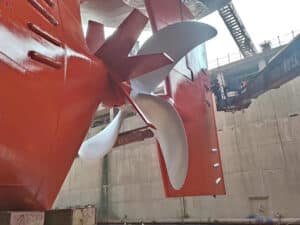
IMO to ease BWM implementation schedule?
Written by Nick Blenkey MAY 13, 2013 — Shipowners will soon know whether there is to be any easing of the schedule for fitting the Ballast Water Management system required under the IMO Ballast Water Management Convention. IMO’s Marine Environmental Protection Committee is meeting in London this week and an important item on its agenda is consideration of a draft IMO Assembly resolution that would revise the implementation schedule set by regulation B-3 of the BWM Convention.
MAY 13, 2013 — Shipowners will soon know whether there is to be any easing of the schedule for fitting the Ballast Water Management system required under the IMO Ballast Water Management Convention. IMO’s Marine Environmental Protection Committee is meeting in London this week and an important item on its agenda is consideration of a draft IMO Assembly resolution that would revise the implementation schedule set by regulation B-3 of the BWM Convention.
In his opening address to this week’s MEPC Session, IMO Secretary General Koji Sekimizu called on more countries to ratify the BWM Convention.
“With 36 contracting parties to date and with the only outstanding entry into force condition of 35 percent of the world’s merchant tonnage now being close to fulfillment, a little under 6 percent is all that is still required,” he said. But, he noted, “the industry continues to have major concerns over the cost of compliance.”
“It is recognized that there is a substantive cost required for installing and operating a ballast water management system – some $1-2 million per ship, depending on size and type, plus operational costs,” said Mr.Sekimizu.
After pointing out that the costs to society of dealing with invasive species can run to billions of dollars, Mr. Sekimizu noted that “shipowners understandably are concerned about incurring additional costs and costs of compliance, especially in the current difficult economic climate and as the costs of other environmental regulations such as sulfur restriction requirements and energy efficiency standards must also be absorbed. It is also inevitable that the development of new technologies required for regulatory compliance takes time, which has caused many owners to hold back from applying them on board recently constructed ships.”
He said that he “strongly encouraged” IMO member states to “cooperate and establish meaningful measures which would ease the burden for the shipping industry of introducing the necessary ballast water management technologies, within the framework of the Ballast Water Management Convention.”
He said that “very positive steps have been taken since your previous session to address outstanding concerns related to the effective implementation of the Convention.
“A correspondence group has worked hard (under the coordination of Japan) to produce a draft Assembly resolution to ease and facilitate the process of implementation. I therefore urge the Committee to engage in further discussions to narrow down the options provided by the group, with a view to approving at this session a draft resolution for adoption by the Assembly at its twenty-eighth session in November. By proceeding in this way, IMO will have an authoritative and operationally practicable agreement, your gentleman’s agreement, in place on how to start effective implementation of the Convention. And, as I have said several times before, once the Convention has entered into force, its formal amendment procedure should be invoked to accommodate your agreement in legal terms for implementation under the active Convention in force.”
Just what degree of relief shipowners can expect remains unclear. What the MEPC is actually going to be contemplating is not some simple list of dates but a document that finally asks it to pick one of three options (with Option A including three sub options).
Meantime, all of this may be of small help to shipowners trading in or two U.S. waters. The U.S. has not ratified the BWM Convention and the U.S. Coast Guard and EPA are moving ahead on implementing the ballast water management requirements of the U.S. Nonindigenous Aquatic Nuisance Prevention and Control Act of 1990 (NANPCA), which is very much U.S. law. In practical terms, that means shipowners will have to fit one of the systems on the as yet fairly short list of Alternate Management Systems (AMS) for Ballast Water Treatment published by the Coast Guard (see earlier story). It should be noted that while all these systems are IMO Type Approved (and therefore meet the needs of the Convention), the fact that other systems have IMO Type Approval does not mean that they meet U.S. requirements. There are means of meeting the U.S. regulations without fitting a treatment system. These include ballast water exchange, getting your ballast water from a U.S. public water supply, discharging to an approved reception facility (as yet there are none), or being a U.S. Navy ship.





Leave a Reply
You must be logged in to post a comment.